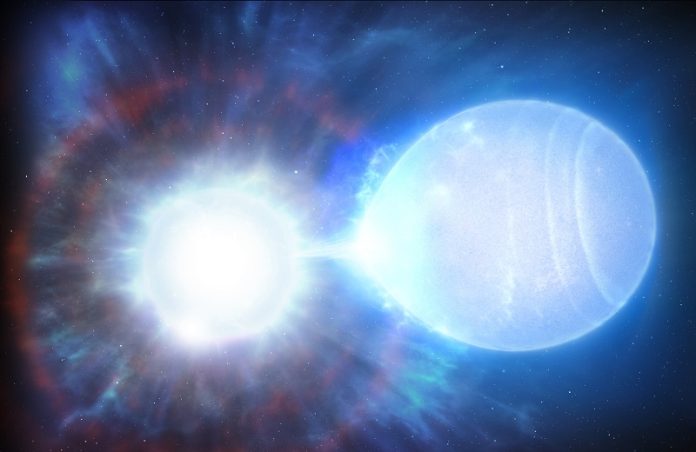
Astronomers from the University of Warwick have discovered a pair of stars that are slowly spiraling toward each other and will one day explode in a dramatic cosmic event.
What makes this discovery even more exciting is that it’s happening just 150 light years away—a relatively short distance in space terms—making it the closest system of its kind ever found.
The two stars are both white dwarfs, the dense remnants left behind when stars like our Sun reach the end of their lives.
This special pair is locked in a close orbit and will eventually crash into each other, causing a type 1a supernova.
These kinds of explosions are incredibly bright and are used by astronomers as “standard candles” to measure distances across the universe.
For a long time, scientists have believed that most type 1a supernovae come from two white dwarfs in close orbit.
As they circle each other, the heavier star pulls material from its lighter companion.
When too much mass builds up, the star can no longer hold itself together, and the result is a powerful explosion. Until now, however, no one had found a confirmed system like this so nearby.
The newly discovered system has the highest total mass ever observed in a white dwarf pair—1.56 times the mass of the Sun. That’s more than enough to guarantee that the system will eventually explode.
The more massive white dwarf weighs around 0.83 solar masses, while the other is about 0.72. Though the explosion won’t happen for another 23 billion years, scientists are thrilled to have found such a system so close to home.
Currently, the two stars orbit each other every 14 hours. Over time, they will spiral closer due to gravitational waves—tiny ripples in space-time. Just before the explosion, they’ll be circling each other in just 30 to 40 seconds.
When the time comes, this event will be unlike anything in our skies. It’s predicted to shine up to 10 times brighter than the full moon and 200,000 times brighter than Jupiter.
The explosion will happen through a rare process called a quadruple detonation, where one blast triggers a chain of others, completely destroying the stars.
Although it’s far in the future, this incredible discovery gives astronomers a clearer picture of how type 1a supernovae happen and brings us one step closer to solving one of astronomy’s big mysteries.
Source: University of Warwick.



